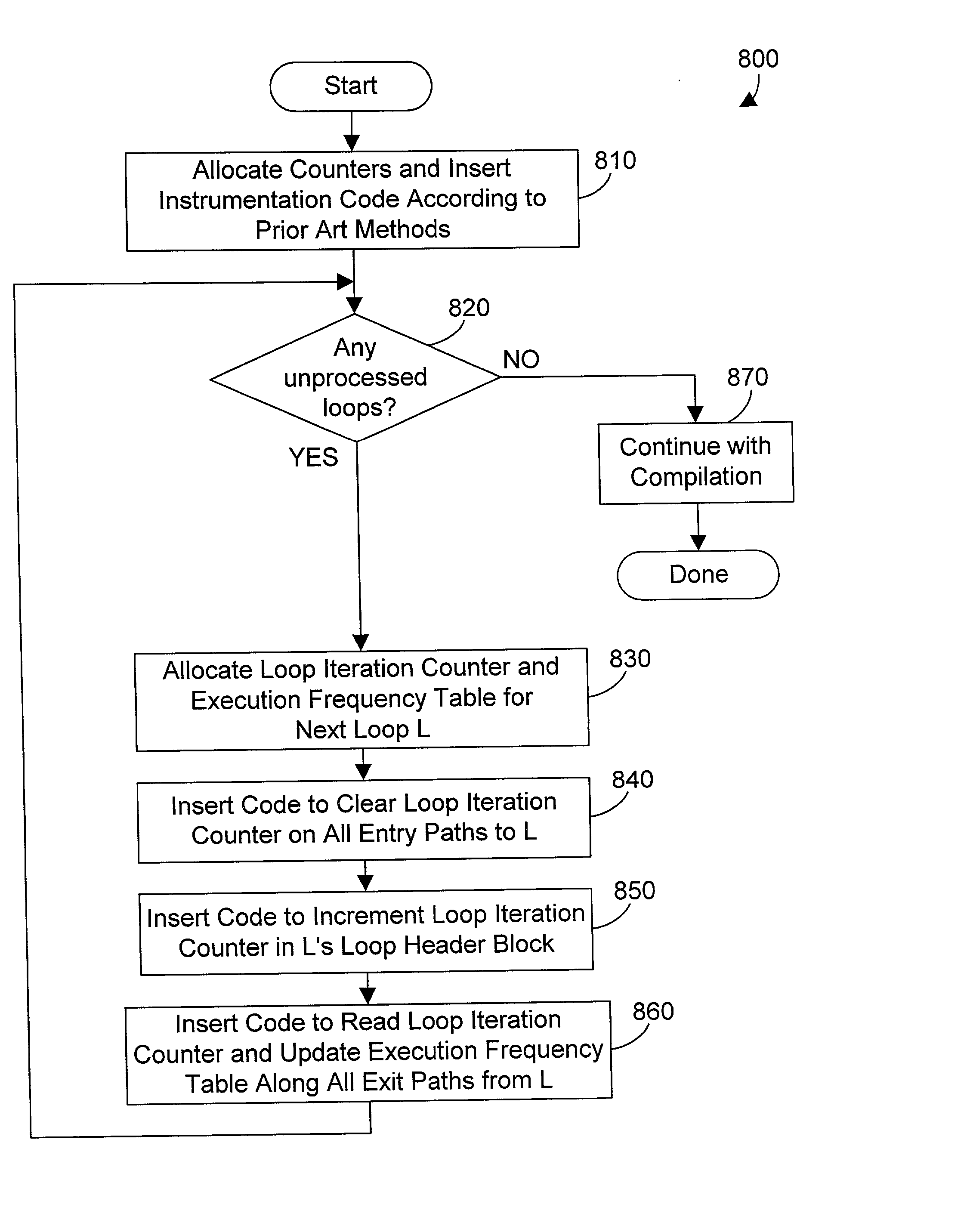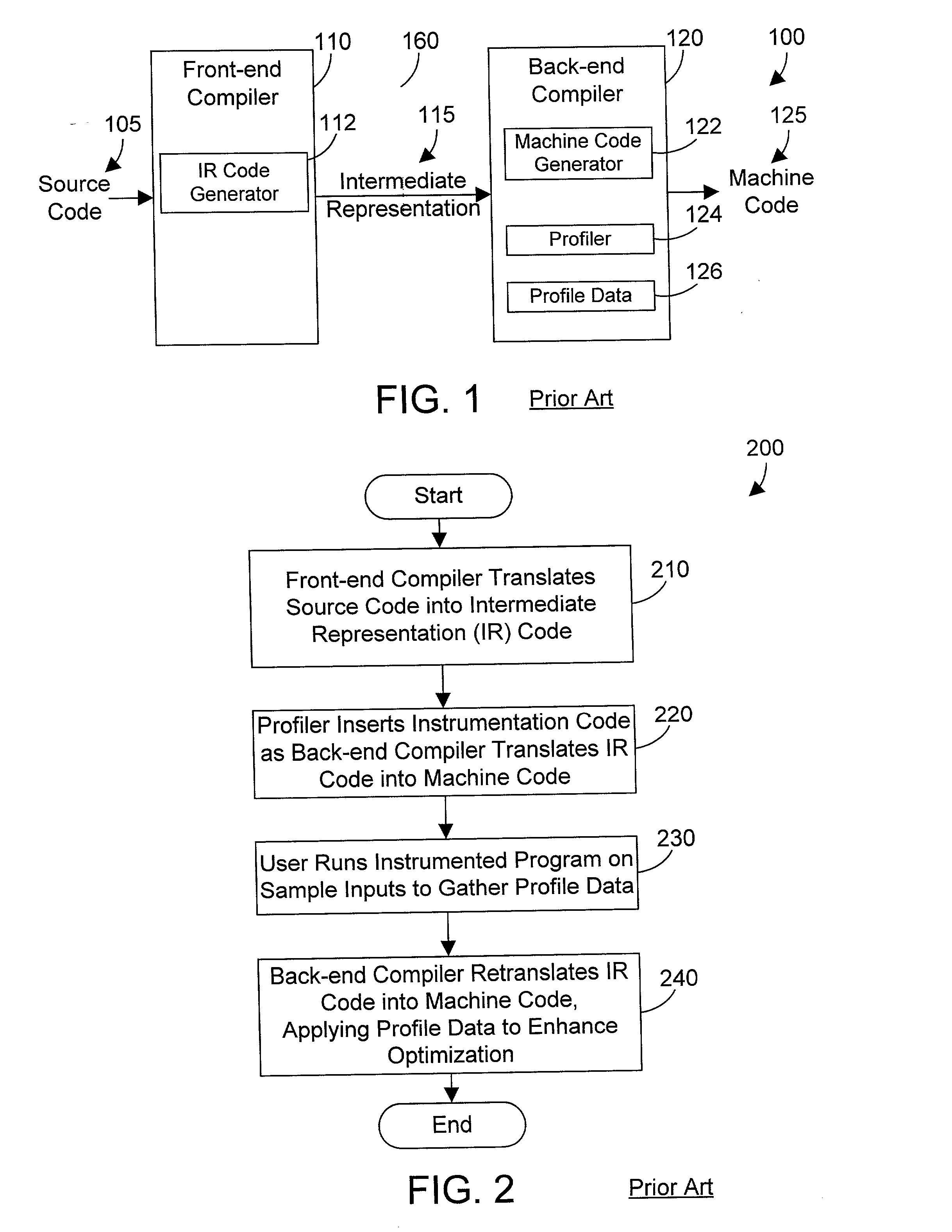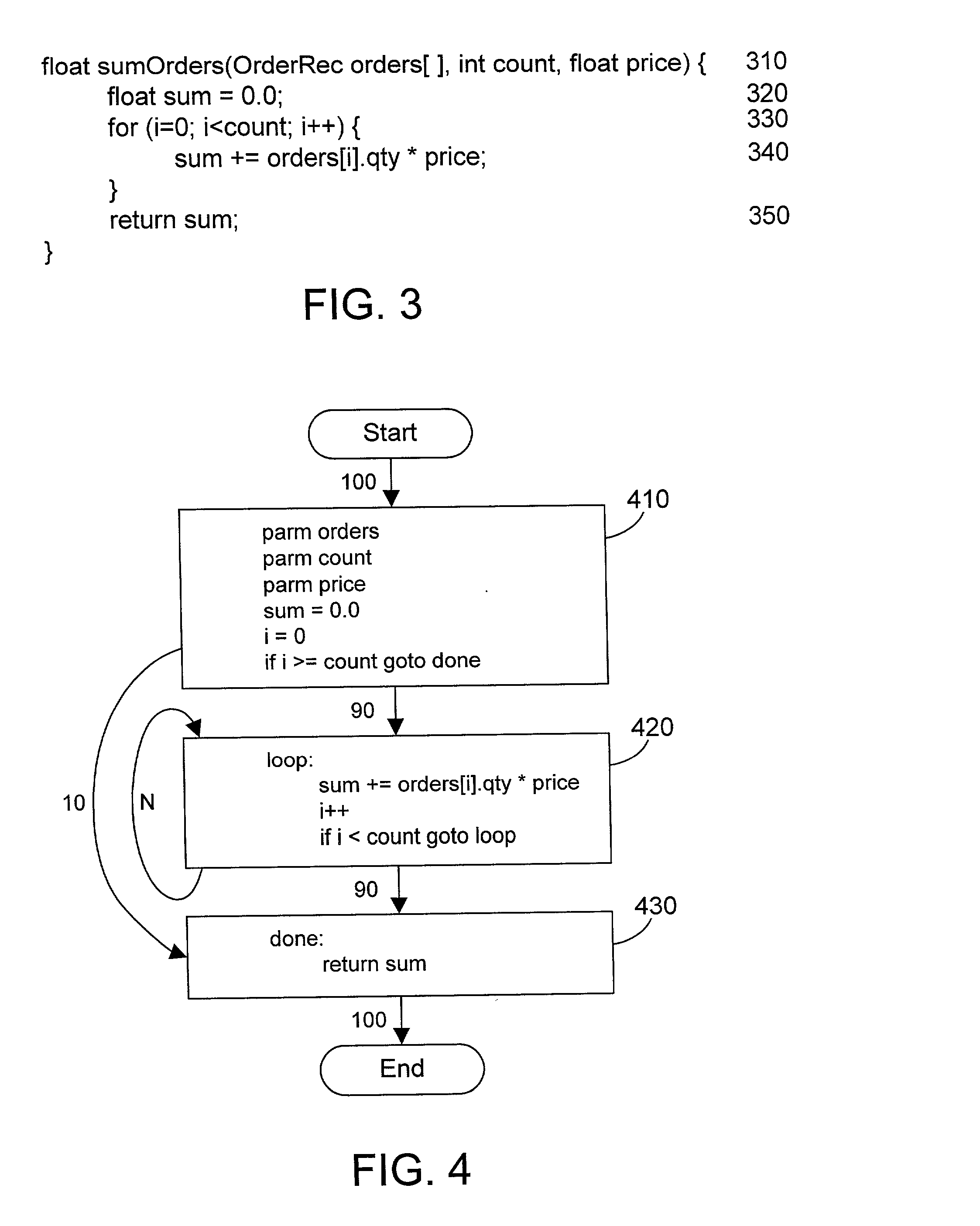Compiler apparatus and method for optimizing loops in a computer program
a compiler and loop technology, applied in the field of compilers, can solve the problems of affecting the execution time of a computer program, the complexity of the modem software when compared to the early computer program, and the increase in the execution time of the computer program
- Summary
- Abstract
- Description
- Claims
- Application Information
AI Technical Summary
Benefits of technology
Problems solved by technology
Method used
Image
Examples
Embodiment Construction
[0051] The preferred embodiments provide a compiler that performs enhanced loop optimizations. New instrumentation code is generated for each loop that collects profile data in an execution frequency table that corresponds to the loop. The execution frequency table gives enhanced information that allows a more intelligent choice of whether to peel or unroll a loop according to a dominant mode, if present, in the execution frequency table. In addition, the loop optimizer of the preferred embodiments may perform a combination of peeling and unrolling on a single loop depending on the information in the execution frequency table. In this manner, the performance of loops is enhanced.
[0052] Referring now to FIG. 8, a method 800 in accordance with the preferred embodiments inserts additional instrumentation code into an instruction stream to collect the more detailed profile data needed to optimize loops in accordance with the preferred embodiments. First, counters are allocated and the i...
PUM
 Login to View More
Login to View More Abstract
Description
Claims
Application Information
 Login to View More
Login to View More - R&D
- Intellectual Property
- Life Sciences
- Materials
- Tech Scout
- Unparalleled Data Quality
- Higher Quality Content
- 60% Fewer Hallucinations
Browse by: Latest US Patents, China's latest patents, Technical Efficacy Thesaurus, Application Domain, Technology Topic, Popular Technical Reports.
© 2025 PatSnap. All rights reserved.Legal|Privacy policy|Modern Slavery Act Transparency Statement|Sitemap|About US| Contact US: help@patsnap.com



